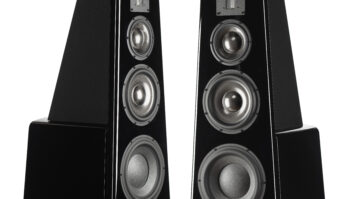The Consumer Electronics Association (CEA) hopes to encourage homebuilder adoption of distributed-audio systems with its adoption of the Multi-Room Audio Cabling Standard, which creates guidelines for incorporating distributed-audio wiring in new and existing homes.
The 15-page document, which includes diagrams, describes the various types of system architectures that can be used to distribute audio throughout the house, the types of products and cabling to use, and where to install products and pull cables. Among other things, it also explains the differences between in-wall volume controls and keypads, and it refers installers to the national electrical code for techniques to suppress lightning-induced electrical surges that could enter a house through buried outdoor-speaker cables.
The standard, dubbed CEA-2030, “addresses a clear need within the builder community for simple, straightforward guidelines on incorporating wiring throughout a new home or remodeling project,” said Peter Hoagland, chairman of CEA’s Multi-Room Audio Video Council (MRAV). The standard, added Walt Zerbe, chairman of the CEA-2030 working group, “will help builders sort through installers’ proposals and give installers who adopt the standard weight with the builders that they approach.” Installers, Zerbe continued, can say they’re using a standard and not just blowing smoke.”
The standards, Zerbe continued, “will make builders comfortable with what they’re putting in” and therefore encourage greater adoption rates. Although 65 percent of homebuilders offer distributed-audio systems, only 12 percent of new homes actually get it, a recent survey found. An annual home-builder survey conducted by CEA and the National Association of Home Builders (NAHB) found that in 2003 and 2004, the percentage of home builders offering multiroom audio held steady at 65 percent, as did the 12 percent penetration rate.
Zerbe believes the standard will do for distributed audio what a structured-wiring standard did for structured-wiring sales. The 570B structured-wiring standard, issued by the Telecommunications Industry Association and the Electronics Industries Association, preceded the structured-wiring boom, he said. Hoagland agreed. “People didn’t know what CAT-5 was in the early days of structured wiring.”
The distributed-audio standard, Zerbe noted, is an outgrowth of the structured-wiring standard, which included a half-page on distributed audio. The audio standard “was pretty incomplete,” Zerbe noted, in part because it focused on distributed-audio systems whose brains were located mainly in a structured-wiring enclosure along with telephone, broadband, lighting and video-distribution components.
“To be fair,” Zerbe said of the new audio standard, “we had to address everyone” and therefore had to include additional audio-system topologies.













